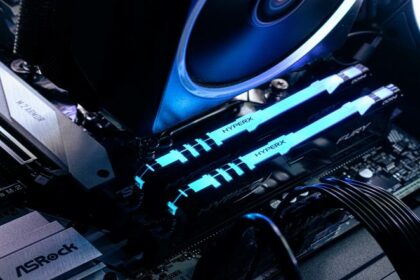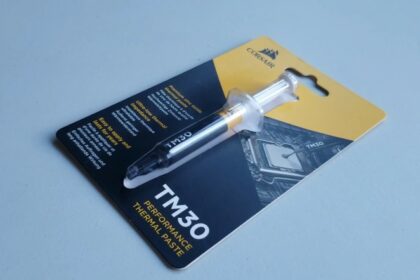The GTX 1080 was a monster of a GPU when it first came out. However, it was also quite expensive. This is something that holds true even today, with many gamers asking if their money could be spent on a better alternative.
Luckily, there are many cards out there that offer similar performance to the GTX 1080, but are either cheaper or have key advantages over the card.
Here, we take a look at alternatives to the GTX 1080. We discuss everything from cards that are cheaper to those that are slightly better than the 1080. We also understand that you might be team Red rather than team Green, and have listed an AMD alternative to the GeForce GTX 1080.
Best Alternatives to the GeForce GTX 1080
The most important factor when it comes to picking an alternative for the GTX 1080 is performance. The GPU in question must be able to perform comparably to the 1080. However, we are willing to let some of that performance go if the drop in price more than makes up for it.
Another important factor is power consumption. You may not realize this, but it is possible for you to save a lot of money on your electric bills if your card consumes 20-50W less than another model. As such, we prioritize cards that can deliver similar performance but have a noticeably smaller power draw.
Top Alternative to the GTX 1080: NVIDIA RTX 2060

The best alternative to the GTX 1080 is the RTX 2060. While the 2060 is a mid-range card and the 1080 is a high-end GPU, the RTX 2060 also came out 2 generations later. As such, the performance of the two cards is comparable.
To be exact, the GTX 1080 does outperform the RTX 2060 by a slight margin when it comes to benchmarks. However, chances are that you will barely be able to tell the difference when it comes to gaming performance.
Both the GTX 1080 and the RTX 2060 are more than good enough for 1080p gaming. They can also be used for 1440p gaming, provided that you are willing to turn down some of the GPU-intensive settings.
Apart from being based on a newer architecture, the RTX 2060 also draws 20W less power than the GTX 1080, The TDP of the RTX 2060 is 160W, while the TDP of the GTX 1080 is 180W. This may not seem like much, but the recommended PSU for the RTX 2060 is 450W, while the recommendation for the GTX 1080 is a whole 50W higher.
The only problem with the RTX 2060 is that it comes with 6 GB of memory. This may very well not be enough for modern games, although this deficiency can be made up for by lowering some of the texture settings and similar options.
There is also the RTX 2060 Super, which is slightly better in terms of performance compared to the GTX 1080. However, it is also a lot more expensive, and it might not be possible for people with a GTX 1080 budget to go for the RTX 2060S.
Better Performing Alternative to the GTX 1080: NVIDIA GTX 1080 Ti
In a similar price range, the only card that is better than the GTX 1080 is the GTX 1080 Ti. While everyone knows that the Ti cards are meant to be souped-up versions of the standard cards, it is quite surprising just how much better the GTX 1080 Ti is compared to its normal counterpart.
At 1080p resolution, the GTX 1080 Ti is roughly 30% better than the GTX 1080 according to various benchmarks and in-game results. Of course, there are other cards that you could consider such as the RTX 2070 Super. But while the RTX 2070 Super is slightly better than the GTX 1080 Ti when it comes to performance, it is also a lot more expensive.
With a wider bus (352-bit), 11 GB of memory, and basically everything pushed to the maximum, the GTX 1080 Ti is better than most of the cards in the generation that came after it as well. As such, it is possible to engage in entry to mid-level 4K gaming using the GPU.
The only thing to remember is that the card has a TDP of 250W, which means that it will require a larger PSU and generate higher electricity bills. One additional point to note is that 1080 Tis are also often much larger in size (depends on the variant) than other GPUs on this list. As such, you should make sure that you fit the GPU in your case before you purchase one.
AMD Alternative to the GTX 1080: Radeon RX-Vega 64

The GTX 1080 was a truly phenomenal card for its time. As such, there weren’t a lot of AMD options that could match up to its power. The only exception is the Radeon RX-Vega 64.
In terms of tech specs, the RX-Vega 64 seems to beat the GTX 1080 with ease. It has 4096 cores compared to 2560, 256 TMUs compared to 160, and a bus width of 2048-bit compared to 256-bit. The larger bus width is a result of the RX-Vega 64 using High Bandwidth Memory version 2 (HBM2), which is vastly better compared to the GDDR5X found on the GTX 1080.
But the simple fact is that none of these specs matter too much when it comes to gaming performance. The GCN 5.0 architecture found on the AMD GPU is inferior compared to the Pascal architecture on the GeForce GTX 1080. All in all, the gaming performance on both of the cards is pretty similar.
The RX-Vega does have a TDP of 295W, which is much greater than the 180W found on the GTX 1080. This means that you will need to have a PSU of 600W to ensure everything runs smoothly. Of course, this also means that your electricity bills will likely be much higher using the Radeon RX-Vega 64.
While there are other cards that use a lot less power than the Vega 64 in its price range, their gaming performance is much worse compared to the GTX 1080. As such, this is the only viable AMD alternative to the GTX 1080 unless you are willing to spend a lot more money.
Speaking of spending money, the RX Vega 64 is cheaper compared to the GTX 1080. However, readers should keep the larger power draw in mind before they splurge money on this AMD GPU.
Cheaper Alternative to the GTX 1080: NVIDIA GTX 1070
The fact is that the Pascal architecture was so far ahead of its time that it doesn’t make sense to purchase a card before the GeForce 10 generation. As such, the best alternative that is cheaper than the GTX 1080 but still offers somewhat comparable performance is the GeForce GTX 1070.
While the GTX 1070Ti is much closer to the GTX 1080 in terms of performance, it is also a lot closer in terms of price. In fact, you might be better off purchasing the GTX 1080 since both of these cards are usually similarly priced.
The GTX 1070, on the other hand, is a lot cheaper compared to the GTX 1080. According to benchmarks, users should expect the GTX 1070 to output 80-85% of the performance of the GTX 1080. This means that the GTX 1070 is more than capable of 1080p gaming, although it may struggle at anything beyond that unless you substantially tone down the settings.
The GTX 1070 also has a TDP of 150W, making it a lot more energy-efficient compared to the GTX 1080. It was considered to be one of the best ‘value for money’ graphics cards when it first launched, and that is still true today.
Conclusion
We just went through four alternatives to the GTX 1080. No matter what your needs and your budget, you should be able to select one of these alternatives as a viable replacement for the GeForce GTX 1080.
Before we end, remember that your current GPU may not be as bad as you think it is. There are always ways to extract more power from your card. In fact, simply cleaning a graphics card that is old may lead to a sizable bump in performance.






